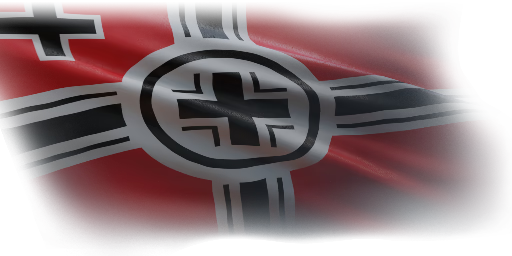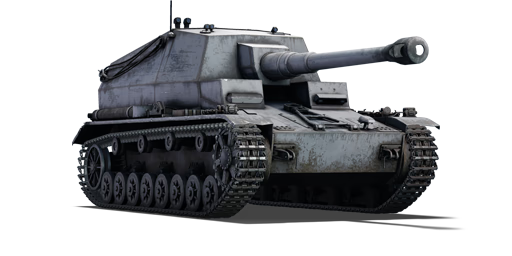



The 105 mm K.18 Panzer Selbstfahrlafette IV Ausführung A (Dicker Max) is a German self-propelled heavy artillery gun. The German Army requested a mobile "bunker buster" in 1939 to demolish the fortifications along the French border, also known as the French Maginot Line in the Alsace-Lorraine province. However, it would never serve that role since the only two vehicles ever built were completed in early 1941, long after the Battle of France had ended. The tank chassis was taken from the reliable Panzer IV E variant and was armed with the standard 105 mm K.18 heavy artillery gun. The ammunition utilized was tungsten-core rounds, which had excellent penetration capabilities when combined with the gun's high velocity. Both vehicles were transferred to the Eastern Front as tank destroyers, where one of them would go on to destroy a considerable number of Soviet tanks.
Introduced in Update 1.57 "Battle March", the Dicker Max would go on to become one of the most feared tank destroyers in its class. It can completely destroy any enemy tanks it hits with its enormous 105 mm K.18 heavy artillery gun. Precise aiming for weak spots is unnecessary, as its best armour-piercing shell's 187 mm armour penetration value can penetrate even the most strongly armoured heavy tanks encountered during engagements. However, it is vital to emphasize that such vehicles are only minimally armoured. Although it can penetrate any tank in its ranks, any tank in its rank can equally easily penetrate it. The vehicle is based on the Panzer IV E variant, which provides it with respectable speed and mobility. Players should use the "Dicker Max" superb gun depression to deliver unexpected blows to the opponent before withdrawing to cover and repositioning to avoid retaliatory artillery strikes.
| Ammunition | Type | Armor penetration (mm) at a distance: | |||||
|---|---|---|---|---|---|---|---|
| 10 m | 100 m | 500 m | 1000 m | 1500 m | 2000 m | ||
| APHE | 155 | 153 | 144 | 133 | 123 | 114 | |
| HE | 23 | 23 | 23 | 23 | 23 | 23 | |
| APCBC | 187 | 184 | 173 | 159 | 147 | 136 | |












Mobility | |
|---|---|
Protection |
|---|
Firepower | |
|---|---|